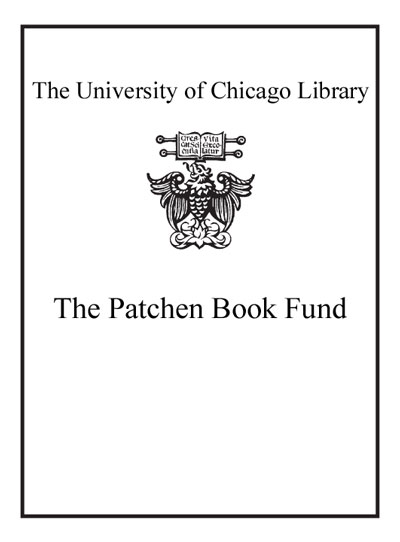Blood, sweat and tears : the changing concepts of physiology from antiquity into early modern Europe /
Saved in:
| Imprint: | Leiden ; Boston : Brill, 2012. |
|---|---|
| Description: | xxvi, 772 p. : ill. ; 25 cm. |
| Language: | English |
| Series: | Intersections ; v. 25 Intersections (Boston, Mass.) ; v. 25. |
| Subject: | |
| Format: | E-Resource Print Book |
| URL for this record: | http://pi.lib.uchicago.edu/1001/cat/bib/8904602 |
Table of Contents:
- Preface and Acknowledgements
- Notes on the Editors
- Notes on the Contributors
- List of Illustrations
- Introduction
- Part 1. History of Physiology in Context: Concepts, Metaphors, Analogies
- Physiologia from Galen to Jacob Bording
- Physiological Analogies and Metaphors In Explanations of the Earth and the Cosmos
- The Reception of the Hippocratic Treatise On Glands
- Between Atoms and Humours. Lucretius' Didactic Poetry as a Model of Integrated and Bifocal Physiology
- Losing Ground. The Disappearance of Attraction from the Kidneys
- The Art of the Distillation of 'Spirits' as a Technological Model for Human Physiology. The Cases of Marsilio Ficino, Joseph Duchesne and Francis Bacon
- The Body is a Battlefield. Conflict and Control in Seventeenth- Century Physiology and Political Thought
- Herman Boerhaave's Neurology and the Unchanging Nature of Physiology
- The Anatomy and Physiology of Mind. David Hume's Vitalistic Account
- More than a Fading Flame. The Physiology of Old Age between Speculative Analogy and Experimental Method
- Suffering Bodies, Sensible Artists. Vitalist Medicine and the Visualising of Corporeal Life in Diderot
- Part 2. Blood
- Blood, Clotting and the Four Humours
- An Issue of Blood. The Healing of the Woman with the Haemorrhage (Mark 5.24b-34; Luke 8.42b-48; Matthew 9.19-22) in Early Medieval Visual Culture
- The Nature of the Soul and the Passage of Blood through the Lungs. Galen, Ibn al-Nafis, Servetus, itaki, 'Attar
- Sperm and Blood, Form and Food. Late Medieval Medical Notions of Male and Female in the Embryology of Membra
- The Music of the Pulse in Marsilio Ficino's Timaeus Commentary
- 'For the Life of a Creature is in the Blood' (Leviticus 17.11). Some Considerations on Blood as the Source of Life in Sixteenth-Century Religion and Medicine and their Interconnections
- White Blood and Red Milk Analogical Reasoning in Medical Practice and Experimental Physiology (1560-1730)
- Part 3. Sweat and Skin
- The "Body without Skin" in the Homeric Poems
- Sweat. Learned Concepts and Popular Perceptions, 1500-1800
- Of the Fisherman's Net and Skin Pores. Refraining Conceptions of the Skin in Medicine 1572-1714
- Part 4. Tears and Sight
- Vision and Vision Disorders. Galen's Physiology of Sight
- Early Modem Medical Thinking on Vision and the Camera Obscura. V.F. Plempius' Ophthalmographia
- The Tertium Comparationis of the Elementa Physiologiae. -Johann Gottfried von Herder's Conception of "Tears" as Mediators between the Sublime and the Actual Bodily Physiology
- Part 5. Body and Soul
- From Doubt to Certainty. Aspects of the Conceptualisation and Interpretation of Galen's Natural Pneuma
- Metabolisms of the Soul. The Physiology of Bernardino Telesio in Oliva Sabuco's Nueva Filosofia de la Naturaleza del Hombre (1587)
- "Full of Rapture". Maternal Vocality and Melancholy in Webster's Duchess of Malfi
- The Sleeping Musician. Aristotle's Vegetative Soul and Ralph Cudworth's Plastic Nature
- Index Locorum
- Index Generalis


